Is Stiffer Actually Softer?
Story by Trevor Hunter, Photos by Align Media
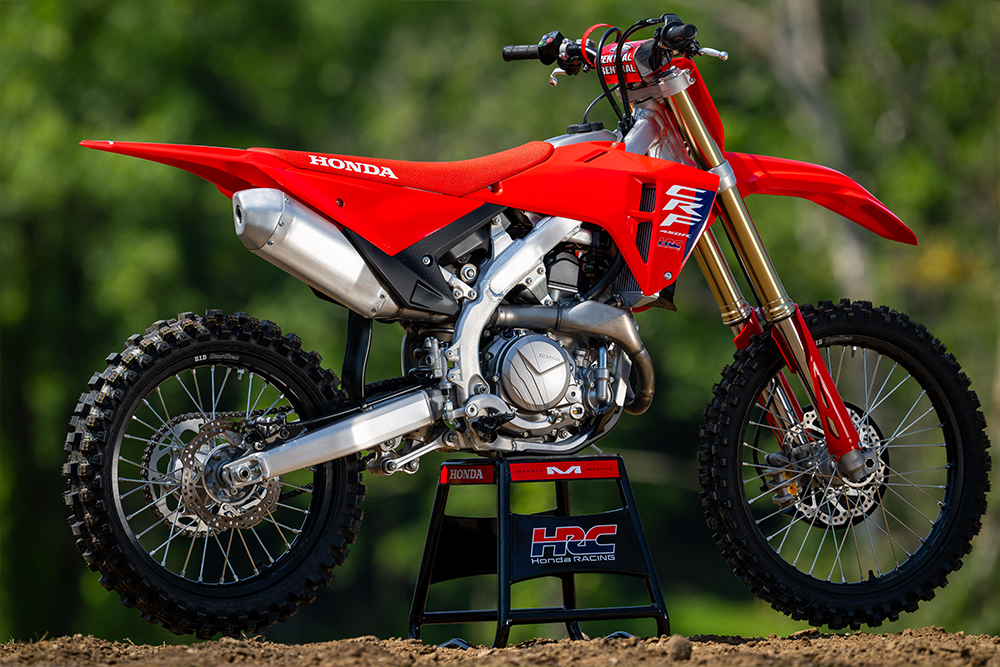
Dating back to the earliest days of American motocross, the lore of Honda and its religious following is special. In the formative years, Honda was unquestionably the powerhouse in MX and SX stateside, garnering the best riders and offering the best bikes to both the factory racers and the general public for several years. Today, all the bikes are truly competitive and new model releases are intriguing, but when Honda unveils a newly revamped model, the drool factor and the spark of interest is full tilt.
The latest generations of CRF450R’s have been slightly controversial with riders loving the bike or hating it, and sometimes even both. Even internally at Honda, some of their R&D riders weren’t satisfied with the current platform. Coming in with a heavily modified new bike for 2025, their goal was to increase comfort, stability, and rideability for the new year. The chassis sees increases in rigidity at various points on the frame, heavily revised suspension components with a new linkage, fork tubes, and internals. The motor isn’t all new, but a new airbox, header pipe, and ECU settings, plus small updates to the clutch for better actuation, leaves just enough to feel a difference on the track.
Starting with the power, there is the least amount changed in this department. The different airbox and intake is paired with a longer header and some minor updates to the clutch, all tied together with updated ECU settings. The previous CRF450R motor was quite good and was well received in our stable of test riders. While it wasn’t perfect for all, it wasn’t a weak point and its ease of use and power delivery was one that could be ridden by all. However, the external changes Honda made has changed the engine character for a more playful, slightly more aggressive power delivery. Don’t get us wrong, the motor is still one of the easiest to ride in the class, but it now has more character to it. The smooth power down low is retained, but it builds through the RPMs quicker and it pulls harder and longer than before in a linear but more pronounced fashion.
The throttle response is cleaner and more connected, and the overall delivery helps provide a lighter feeling and more playful bike with a free-er revving spirit. The engine covers a more broad spectrum of riders, capable of being lugged and ridden in taller gears like before while now being able to rev further and ridden more aggressively. We were able to roll corners in third gear without much clutch and or downshift into second gear and get in and out very quickly.
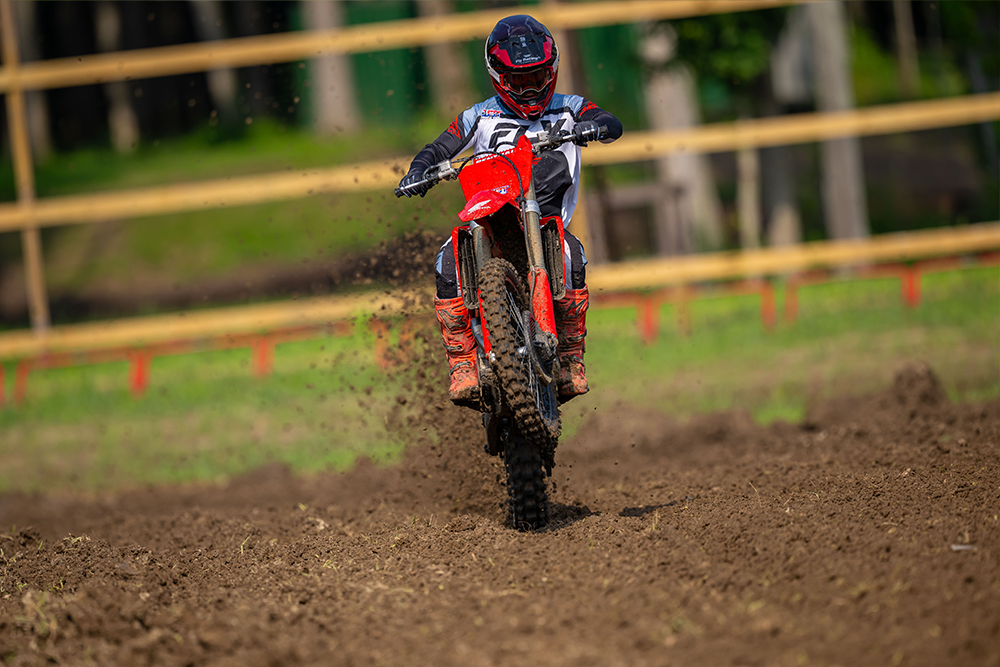
The suspension package felt very solid on our day. There weren’t many bikes on the track so we didn’t get bigger breaking bumps or deep holes, but we had big jumps and steep transitions, choppy ruts, and just enough chatter to get a feel for the suspension. We started with a sag of 102mm, and the forks were dropped from the stock 5mm height to 2.5mm height. Honda said this was changed for all of the media on hand because of the soft conditions due to all the rain leading up to the event. We ended up getting rained out at the end of our first day and completely on our second day of riding, so we never got a chance to try raising it back up to 5mm. However, we really didn’t have much of a reason to try raising the forks other than to see how it feels off the showroom floor, and we suspect we’d leave it at this spec moving forward. Honda also preset the high speed compression on the shock -⅛ turn from stock for all of us.

Early in the day, we stiffened up the fork compression two clicks to help refrain from getting low in the stroke on jump landings and pitching on decel in the soft dirt. With the change, we made progress in that area without sacrificing initial bump compliance and comfort. I (Trevor Hunter) then took a turn of preload out of the shock to drop the sag to ~106mm for a better balance as that’s something I typically like with a lot of my bikes. After the sag change (and a positive one at that), I tried putting the high speed compression back to standard with the less preload but I didn’t like it overall. I liked the position under acceleration, but disliked the position on decel and lost bump compliance in the small chop and ruts, ultimately settling back on the -⅛ turn.
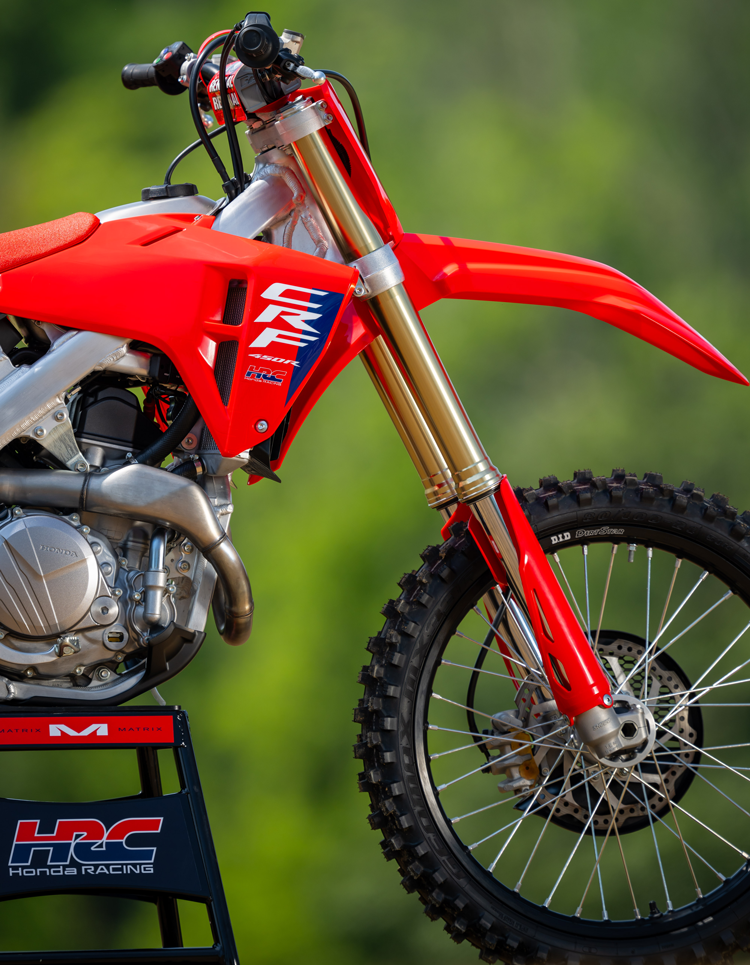
The action of the suspension overall worked well for both of our riders, and offered more comfort than we’re used to from Honda and Showa. They’ve gotten better at this over the past few years, but this was another step in the right direction and we were pleased with its performance at Ironman Raceway.
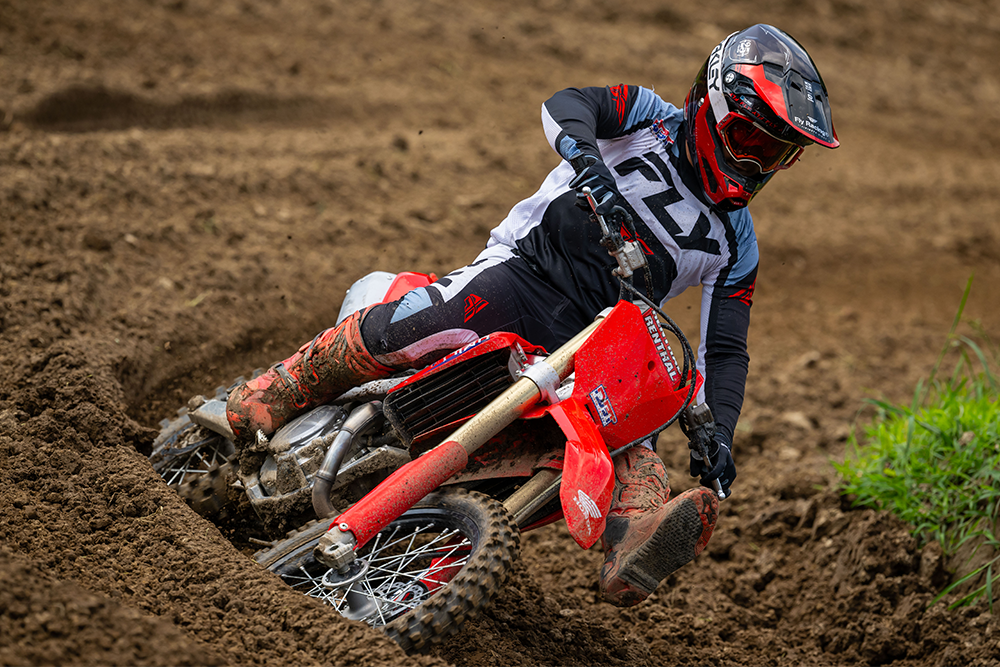
The chassis is what received the most changes for 2025 and after one day, we feel it’s a major step in the right direction. Honda saying they stiffened the frame sounds counterintuitive to the issues we were faced with on the last gen CRF, but it also made sense. When suspension is too soft, it can feel harsh and “stiff” so why can’t a chassis suffer from the same feelings? In our eyes, the bike was either going to be really good or very tough to ride with the changes made, and we’re going with the former on this one as Honda did their homework correctly.
The 450R retains its excellent cornering characteristics, even improved in a lot of instances as it doesn’t deflect or react to bumps on corner entrance or mid corner. Yet, it improved dramatically in stability and comfort. While we weren’t riding Glen Helen on a Thursday afternoon, Ironman Raceway did shape up enough to get a good feel for the chassis changes. The new chassis offers comfort, is confidence inspiring, and much more consistent than the old chassis.
We never totally knew what the CRF chassis would do previously, as it could float over a bump effortlessly one lap then react wildly the next, with no rhyme or reason for this. Today, we felt we could put the bike where we wanted, when we wanted and had confidence doing so. The bump compliance is improved, but the
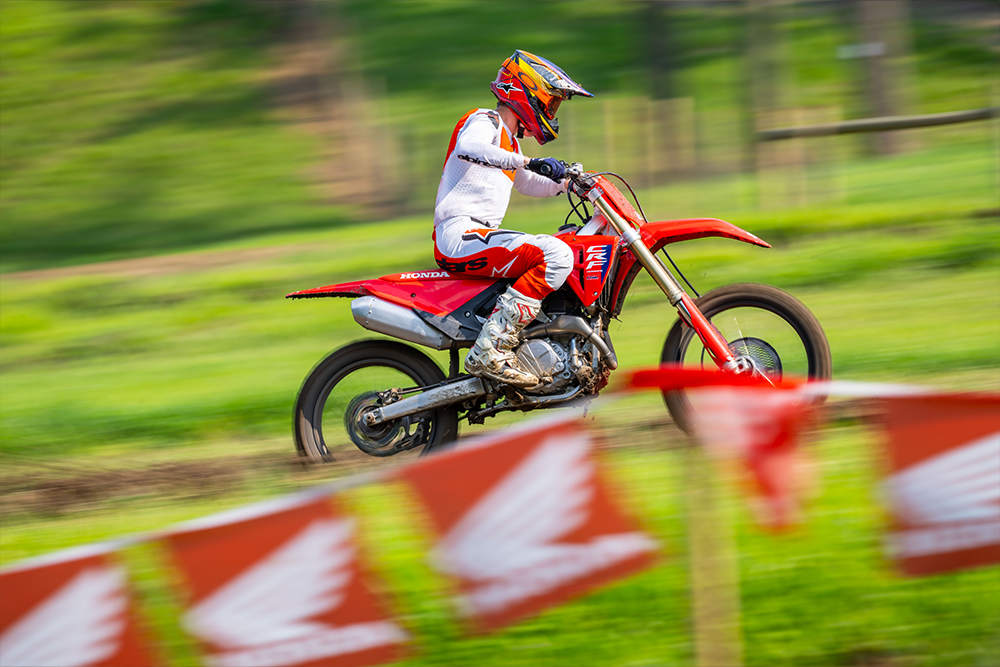
We also felt the last chassis was overly sensitive to changes, which made setting the bike up very difficult and dependent on the track conditions and rider. We made a few smaller adjustments throughout the day and felt the notable difference on the track was on par with the amount of change we made. And even if we made a change we didn’t like, the bike was still more than rideable and didn’t drastically affect the chassis in a negative way. The bike’s stability was on par, yet it still cornered as you’d expect a Honda to corner – class leading.
At the end of the day, the CRF450R is in good hands and less polarizing in our eyes. The chassis-handling is more “middle-of-the-road” with improvements in comfort and stability, while retaining its cornering characteristics. The engine is still one of the easiest to ride, but with a more lively delivery from top to bottom. The suspension feels well setup for the average rider, but is accommodating for even the fastest pro level riders. Honda revamped much of the bike for 2025, and we feel this may be their best one yet.


